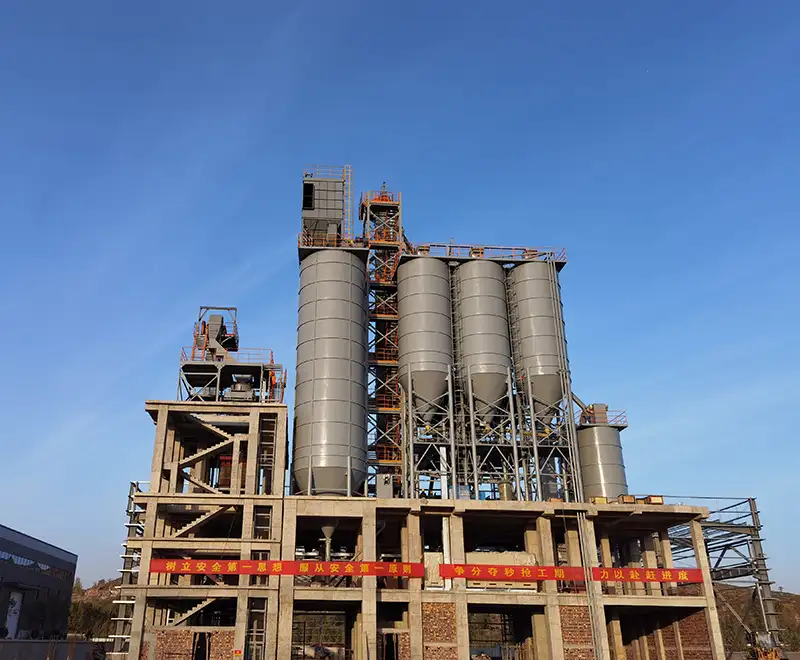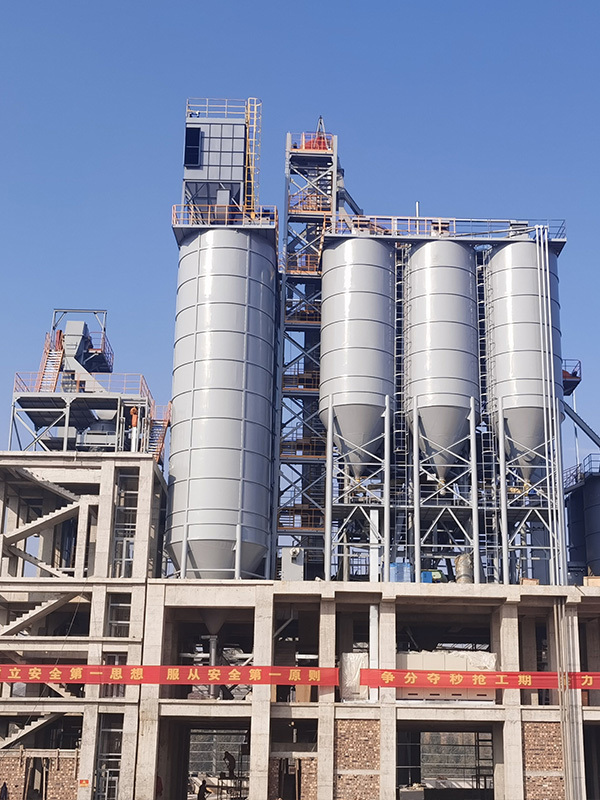-
ContactIs a professional manufacturer of construction machinery integrating research and development, manufacturing, sales, installation and after-sales service.
-
ProductsContactIs a professional manufacturer of construction machinery integrating research and development, manufacturing, sales, installation and after-sales service.
-
ContactIs a professional manufacturer of construction machinery integrating research and development, manufacturing, sales, installation and after-sales service.
Climate Adaptation Adjustment Strategies for Dry-Mix Mortar Production Lines After Cooler Autumn Weather
After the Start of Autumn, the climate gradually transitions from hot to cool, with increased day-night temperature differences, reduced air humidity, and stronger winds. These changes have multifaceted impacts on the stable operation of dry-mix mortar production lines and product quality, requiring targeted prevention and control measures.
Aug 07,2025

After the Start of Autumn, the climate gradually transitions from hot to cool, with increased day-night temperature differences, reduced air humidity, and stronger winds. These changes have multifaceted impacts on the stable operation of dry-mix mortar production lines and product quality, requiring targeted prevention and control measures.
Temperature fluctuations are the most prominent climatic feature after the Start of Autumn. Daytime temperatures may remain relatively high, while nighttime temperatures drop significantly. Such temperature variations can cause thermal expansion and contraction in raw materials like sand, gravel, and cement used in dry-mix mortar. If raw materials are not stored properly, caking or segregation is likely to occur. Meanwhile, under the influence of day-night temperature differences, metal components of production equipment may develop gaps, affecting mixing uniformity and potentially leading to unstable consistency of finished mortar.
Reduced air humidity is another characteristic of autumn climate, which accelerates water evaporation during the production of dry-mix mortar. Ultra-fine powders such as fly ash and slag in raw materials are prone to flying due to dryness, not only causing raw material waste but also affecting the production environment. More importantly, insufficient humidity requires additional water addition during mortar mixing, altering the water-cement ratio and thereby impacting the strength and durability of finished products.
Windy weather in autumn also affects production lines. Raw materials stored outdoors are easily scattered by wind, increasing material loss. Excessively strong winds can also interfere with the operation of dust removal systems, leading to excessive dust concentrations in production workshops. In addition, dry and windy environments are prone to static electricity, posing potential threats to the safety of electrical equipment in production lines.
To address these impacts, production lines need to strengthen raw material storage management by using closed warehouses and equipping temperature and humidity monitoring devices; adjust mixing process parameters by appropriately modifying water addition based on real-time temperature and humidity; enhance equipment maintenance and promptly replace sealing components; and improve dust removal and anti-static facilities to ensure safe and stable production.
Request Quote
Note: Please be sure to fill in the information accurately and keep communication open, we will get in touch with you as soon as possible
Cookie
Our website uses cookies and similar technologies to personalize the advertising shown to you and to help you get the best experience on our website. For more information, see our Privacy & Cookie Policy
Cookie
Our website uses cookies and similar technologies to personalize the advertising shown to you and to help you get the best experience on our website. For more information, see our Privacy & Cookie Policy
These cookies are necessary for basic functions such as payment. Standard cookies cannot be turned off and do not store any of your information.
These cookies collect information, such as how many people are using our site or which pages are popular, to help us improve the customer experience. Turning these cookies off will mean we can't collect information to improve your experience.
These cookies enable the website to provide enhanced functionality and personalization. They may be set by us or by third-party providers whose services we have added to our pages. If you do not allow these cookies, some or all of these services may not function properly.
These cookies help us understand what you are interested in so that we can show you relevant advertising on other websites. Turning these cookies off will mean we are unable to show you any personalized advertising.
Inquiry:
WhatsApp:
Email:
导航下拉添加类名.active
在线客服添加返回顶部
右侧在线客服样式 1,2,3 3
表单验证提示文本: Content cannot be empty!
循环体没有内容时: Sorry,no matching items were found.
CSS / JS 文件放置地

